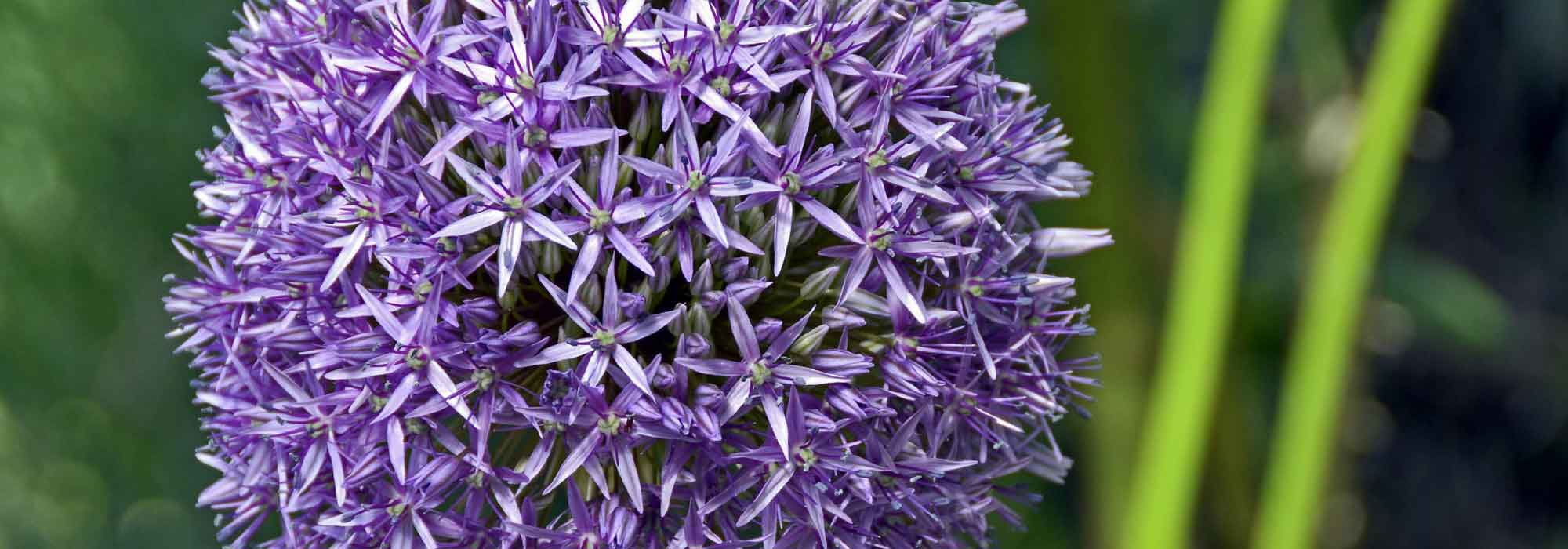
Allium, ornamental garlic: planting, growing and care
Contents
Allium in a nutshell
- The flowering of Allium, in beautiful spheres, is spectacular
- From the end of spring, it is decorative in borders as well as a cut flower
- It is stunning from the first year of planting
- Ornamental garlic grows easily in full sun in any well-drained soil
- Hardy, it remains in the ground from one year to the next
A word from our expert
Highly valued for their unconventional spring or summer flowering in blue, purple, white, pink, or yellow spheres measuring 5 to 30 cm in diameter perched atop tall stems, Alliums or ornamental garlic deserve their place in all naturalistic or contemporary gardens. Their striking verticality adds depth and breath to flower beds.
Allium giganteum, Allium schubertii, or Allium Gladiator, Allium ‘Purple Sensation’, white Allium or yellow Allium molly, all are perfectly hardy, remain in place from one year to the next, and thrive in full sun, in well-drained soil.
Once fallen into disuse, they are making a comeback in our gardens to structure sunny, low-maintenance flower beds; they are best planted en masse in the middle or background of a bed, at the edge, in rockeries, or in pots. They are fabulous in dry gardens.
Easy to combine, they form beautiful colourful clumps with a grand floribundity, alongside various perennials, roses, grasses, or other bulbous plants like tulips.
Discover our collections of Alliums, along with our tips for planting, maintaining, and pairing them in the garden.
Description and botany
Botanical data
- Latin name Allium
- Family Alliaceae
- Common name Allium, Ornamental garlic
- Flowering from April to July
- Height from 0.15 to 1.50 m
- Exposure Sun
- Soil type all, well-drained
- Hardiness -15°C
The genus Allium comprises around 700 species of bulbous or rhizomatous perennials native to the dry and mountainous regions of Europe and Asia, some of which are edible, such as its relatives garlic (including the well-known Allium ursinum or wild garlic), onion (Allium cepa), shallot, chives (Allium schoenoprasum), and leek.
In addition to these vegetable species, about twenty species of ornamental garlic are commonly cultivated throughout France in gardens for the beauty of their round or loose globular flowers perched atop slender yet robust stems.
The habit is variable, ranging from architectural to ground-covering: Alliums are classified into tall species (0.80 m to 1.50 m in height), medium species (0.45 m to 0.75 m), and short species (0.20 m to 0.40 m), according to the diameter of their flowers, which ranges from 5 to 40 cm. The tall species bloom in large spherical umbels, while the short species mostly bloom in loose umbels.
This bulbous perennial develops from a single bulb. Fast-growing, it can reach up to 1.50 m in height when in bloom under optimal conditions, and will spread across the ground by multiplying bulbils that will eventually form a clump. We distinguish bulbous Alliums from rhizomatous species that develop on short, fleshy rhizomes.
Once well established, they will bloom for many years; some naturalise easily and are even considered invasive in certain regions (Allium triquetrum).
In March-April, the bulb emits a tuft of deciduous leaves or more or less persistent depending on the severity of winter, ribbon-like or linear, more or less narrow, sometimes hairy, basal or sheathing the stems. They are shorter than the flower stalk. They sometimes form a tuft of gramineous foliage in ground-covering species. Composed of basal leaves 7 to 60 cm long, with a medium green to grey-green hue, the foliage yellows, wilts, and often disappears before or at the same time as the flowering appears. The leaves emit a strong garlic scent only when crushed.
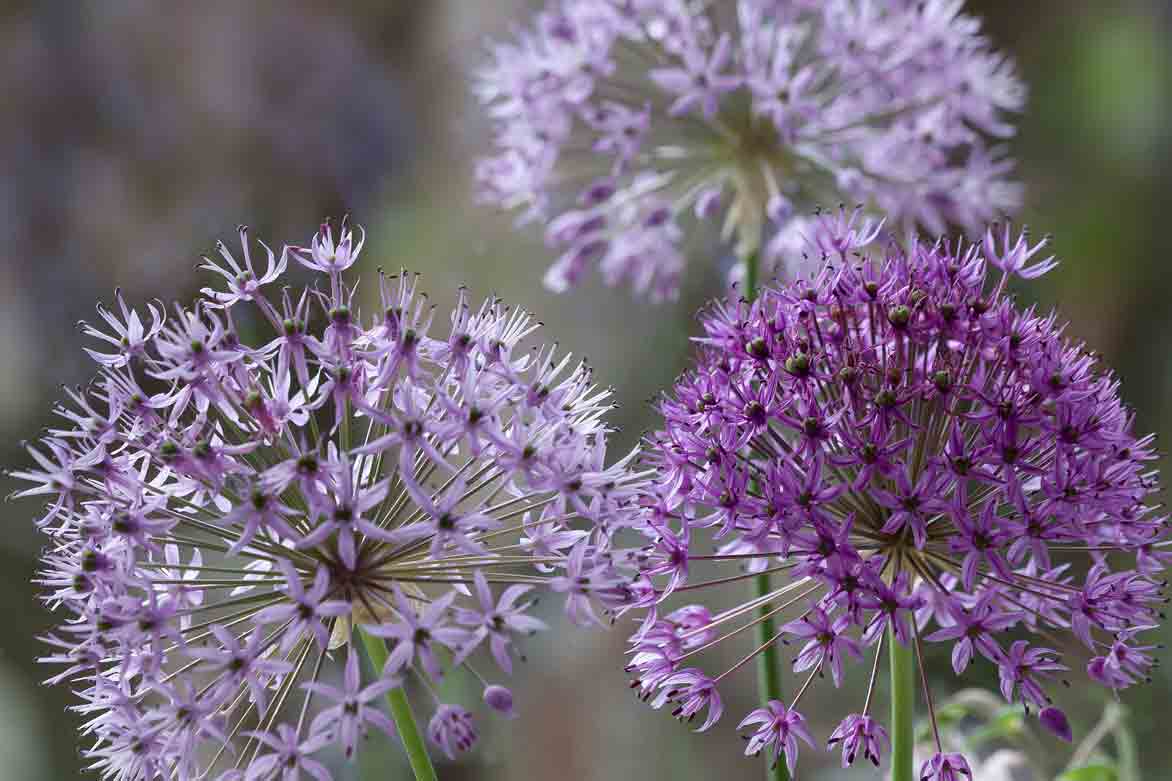
The genus Allium includes tall and short species
The flower stalk emerges from this dense grassy tuft and rises quickly, sometimes to over 1 m high. The stems are sturdy and very stiff, smooth or ridged and leafless. Green or sometimes tinged with purple depending on the varieties, they bear at their tips the inflorescences, which generally correspond to spherical umbels, sometimes semi-spherical or pendulous, measuring from 1 to 30 cm in diameter.

Allium ‘Globemaster’ – Allium bulgaricum (Nectaroscordum siculum) – Allium ‘Red Mohican’
From April to July-August depending on the varieties, the flowers appear at the top of this slender stem. They offer varied colours, ranging from bright blue to amethyst, mauve-purple, red, white, and golden yellow. In some Alliums, the petals are marked with a central line and have a darker heart that adds a lot of relief to the flower.
Their shape varies by species, ranging from the voluminous and spectacular globes of Allium christophii to the airy umbels of Allium carinatum ssp pulchellum.
The tall species bear well-rounded and compact umbels 5 to 30 cm in diameter, made up of small star-shaped flowers with 6 petals (sometimes grouped by the hundreds) or bell-shaped flowers radiating from a central point.
Some flowers have floral pedicels of different lengths, like the Allium schubertii sometimes called “firework garlic” which has large spherical umbels with a spider-like pattern. The flowers alternate between long and short pedicels.
In others, the umbels are curiously topped with small different flowers borne on long petioles, resembling an upright pom-pom. The umbels of Allium sphaerocephalon form tight flower pom-poms. The Allium ‘Hair’ is a true curiosity with its hairy, tousled flowering.
In the short species, the umbels generally exhibit a lighter and more delicate character. They mostly bloom in loose umbels of star-shaped flowers like in Allium moly or Golden Garlic, with campanulate flowers often pendulous in Allium triquetrum or Allium cyathophorum var. farreri, or with open cup-shaped flowers in Allium neapolitanum. Some, however, like Allium karataviense and Allium senescens subsp. montanum form small spherical umbels perched only 30 cm high.
Allium flowers are melliferous and often exude a slight sweet fragrance that attracts many pollinators, including butterflies.
The flowering lasts about 6 weeks. Then, at the end of summer, the pollinated flowers dry on the stem, transforming into inflorescences of seeds with a parchment-like hue that prolongs the decorative effect for at least another 3 months.
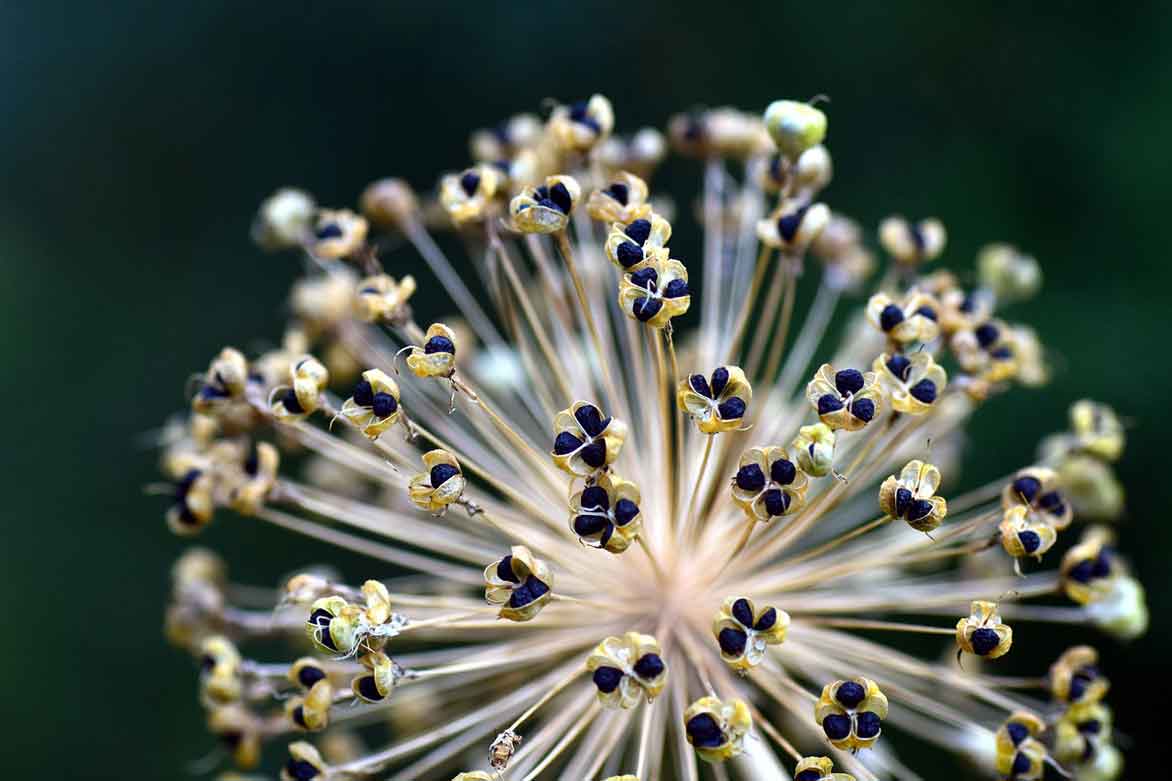
While Allium flowers make lovely fresh bouquets, they are also extraordinary as dried flowers
Except for Allium ursinum or wild garlic, which prefers the dappled shade of a woodland, Allium loves warm and sunny exposures, as well as all fresh, light, rather dry, and especially well-drained soils, even poor or stony. It does not fear summer drought, which corresponds to the resting period of the bulb.
Perfectly hardy, the bulbs can overwinter underground even in cold regions. They withstand temperatures down to -15 °C and often beyond, in well-drained soil.
Visible from afar in the garden, the graphic inflorescences of ornamental garlic are fabulous focal points in a contemporary or rustic flowerbed. With their large spectacular spherical heads, the tall Alliums structure the flowerbeds. The short or ground-covering species are perfect for filling the borders of a wild garden.
Allium can be used in rockeries, in a scree garden, at the back of a row of box balls, in isolated clumps, or as a repetitive motif in a sunny flowerbed.
Pair it with graceful perennials and grasses like Alchemilla, Stipa, Carex, small hardy geraniums or bellflowers, Buenos Aires verbena, columbines, or Heucheras. It will look wonderful surrounded by valerian, thistles, or gypsophila, and in the company of bulbous plants like late-flowering tulips and irises.
Allium also pairs very well with roses and peonies in flowerbeds.
It also makes very decorative pots on the terrace from spring to autumn.
Species and main varieties
While there are over 700 species of Alliums, around forty are commonly cultivated in gardens.
Ornamental garlics are classified by their height, into tall species and short species. The tallest specimens easily reach heights of 0.80 m to 1.50 m, intermediate Alliums range from 0.45 to 0.75 m, while the smaller species do not exceed 40 cm.
They are also distinguished by their shape, in globular or loose umbels and the diameter of their inflorescences, from giant (30 cm in diameter) to small (5 cm).
Alliums are incredibly graphic bulbous plants, with strong decorative potential. The choice of an allium depends on its height, colour, and the shape of its flowers, as well as the intended location.

Alliums: main varieties classified by flowering period and height
Magnificent when grouped in borders, rockeries or in pots, alliums also make spectacular cut flowers for dry or fresh bouquets.
From the most classic to the most unusual, discover our beautiful collection of alliums, including some exclusive varieties.
The most popular
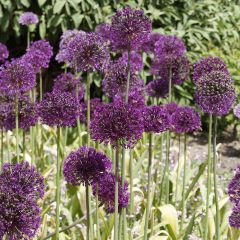
Allium aflatunense Purple Sensation
- Flowering time June, July
- Height at maturity 90 cm
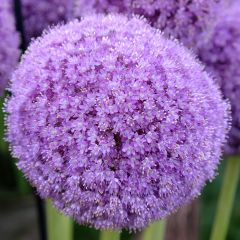
Allium giganteum
- Flowering time July, August
- Height at maturity 1,50 m
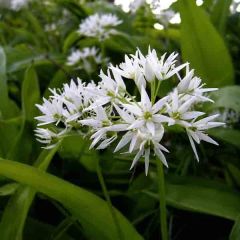
Allium ursinum tubers
- Flowering time May, June
- Height at maturity 20 cm
Our favourites

Allium Pinball Wizard
- Flowering time June, July
- Height at maturity 70 cm
Other interesting varieties
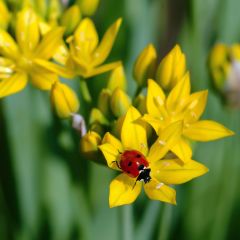
Allium moly
- Flowering time July, August
- Height at maturity 30 cm
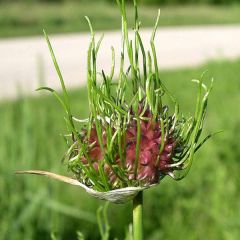
Allium vineale Hair
- Flowering time July, August
- Height at maturity 80 cm
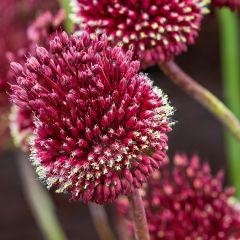
Allium amethystinum Red Mohican
- Flowering time July, August
- Height at maturity 95 cm
To make the right choice, discover our guide: “Allium, ornamental garlic: which varieties to choose?”
Discover other Allium
View all →Available in 2 sizes
Available in 0 sizes
Available in 1 sizes
Available in 0 sizes
Available in 2 sizes
Available in 1 sizes
Available in 1 sizes
Available in 1 sizes
Available in 2 sizes
Planting ornamental garlic
Where to plant Allium bulbs?
Allium is a easy-to-grow bulb that thrives throughout France. Except for Allium ursinum or wild garlic, which prefers the coolness of a woodland, plant it in full sun, sheltered from strong winds to protect the stems of the taller varieties.
Hardy and robust, Allium bulbs can remain in the ground. When planted in good conditions, they will bloom for many years. Give them a spot in a well-drained soil, even stony, as they dislike moisture. They can adapt to poor soil, but may then need a bit of fertiliser to bloom well.
Depending on the height of the stems, which varies from 0.20 to 1.50 m, plant your Allium bulbs in groups or individually in the middle or background of a perennial or bush bed, at the edge, in a rockery, or even in pots.
The species with large flowers and tall varieties like A. giganteum or A. Globemaster should be grouped in the background of a perennial bed.
Shorter species like A. moly or A. sikkimense will look wonderful at the edge, in a rockery, along a wall, or grown in pots or troughs on a sunny terrace.
Alliums pair very well with grasses, roses, other bulbous plants like tulips, and a variety of perennials.
When to plant Allium?
Allium bulbs are best planted in autumn, preferably before the end of October, so they have time to settle in and generally bloom in late spring and early summer. Late planting is possible until the end of January for a slightly delayed flowering. They are stunning from the first year of planting.
How to plant Alliums?
Alliums should be planted in small groups for a natural look or in larger numbers for a spectacular display. Small and medium-sized bulbs (varieties from 20 cm to 75 cm) should be planted in clusters of 3 to 5 bulbs or at a rate of 80 to 150 bulbs per m² for a flowering carpet. Large Allium bulbs should be planted in groups of 3, 5, 7, or more.
- Using a bulb planter, bury the bulbs 10 to 15 cm deep
- Space large bulbs 15 cm apart, and about 5 cm for small bulbs
- Alliums need well-drained soil; if your soil is heavy, create a bed of sand or gravel directly under the bulb, at the bottom of the planting hole to promote drainage
- Cover the bulbs with twice their height of soil
- Optionally, consider marking their location with a stick so you can find them after the foliage dies back
 Allium bulbs fear only one thing: moisture, so provide them with well-drained soil
Allium bulbs fear only one thing: moisture, so provide them with well-drained soil
To learn everything about planting ornamental garlic, check out our practical sheet: “Planting alliums” as well as our step-by-step tutorial video
Read also
Planting alliumsMaintenance and care
Very low maintenance, Allium requires limited care and attention. Water only during the growing season if the soil is very dry. Keep the soil moist during the growing season and then stop watering after flowering. Potted alliums have higher water needs: water regularly, and also stop watering in summer.
After flowering, you may be torn between the desire to cut or not cut the faded stems. Pruning is not necessary. The faded heads of the larger varieties can be left; as they dry out, they will continue to decorate the beds until autumn, unless you wish to prevent them from self-seeding, in which case, remove the faded flowers by cutting the stem as close to the ground as possible.
Discover our article on how to dry Allium flowers.
However, pruning the faded inflorescences of some small varieties will limit their spread, as some, like Allium triquetrum or Wild Garlic (Allium ursinum), can sometimes become invasive.
Only cut the foliage when it is faded and completely dry, to allow the bulb time to rebuild its reserves necessary for the next flowering. You can stake tall species if necessary to prevent the stems from bending under the wind.
In spring, before flowering, you may optionally apply a flower bulb fertiliser if your soil is too poor.
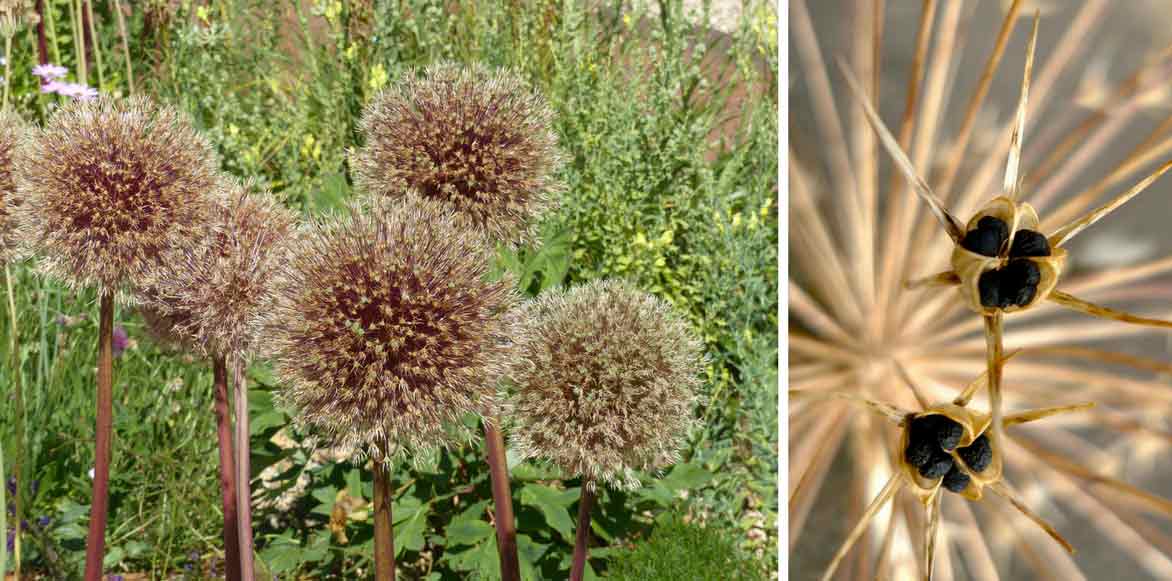 Very decorative, the heads of alliums continue to enliven the beds until autumn as they dry out.
Very decorative, the heads of alliums continue to enliven the beds until autumn as they dry out.
Diseases and potential pests
Allium is a very resilient bulb that rarely encounters cultivation problems. When planted in poor growing conditions (heavy soil, excess water), it can be susceptible to certain pests, particularly the onion fly, which is responsible for bulb death. Destroy any affected bulbs. In cases of insufficiently drained soil, bulbs may sometimes be affected by white rot: discard any damaged or diseased bulbs.
Multiplication
The Allium multiplies by sowing or by division of clumps. Sowing is a method that, on one hand, does not guarantee the production of true-to-colour young plants from hybrid plants and, on the other hand, takes a long time before obtaining bulbs that are ready to flower. Prefer division, which is the most effective and easiest method to implement in the garden.
By sowing
Sow the seeds purchased in packets or collected from dried flowers sparsely, directly in the ground at the end of summer or in autumn, or in a draining mix (potting soil, sand, compost) under a cold frame or in pots. Lightly cover with soil and keep the mix moist until germination. They will germinate from the following spring. This is a random and quite lengthy method: the seeds will not necessarily produce bulbs true to the mother bulb and will not flower immediately. It will take them 4 to 5 years to show off beautifully and be floriferous.
By separating bulblets
You will quickly obtain new bulbs true to the mother plant. The division of alliums is carried out on plants that are at least 3 years old, in autumn, when the flowering cycle is well finished.
- With a garden fork, lift the clump
- Gently separate the bulblets from the mother bulb.
- Replant the separated bulbs immediately in the ground or in pots to give them time to grow well
Combining ornamental garlic
Versatile, Alliums are essential in a natural garden or a contemporary flowerbed for creating high-colour graphic scenes. Grandiose yet fugacious, they bloom from spring, enhancing naturalistic flowerbeds, cottage gardens, and contemporary meadow gardens. They are classics in mixed borders, adding character and whimsy.
These beautiful, low-maintenance bulbous plants easily associate with other perennials from which they majestically emerge. Once flowering is over, the foliage quickly fades, making it beneficial to pair them with other easy-going perennials to avoid large gaps in the flowerbeds during the height of summer.
When planted in groups rather than isolation, the spectacular inflorescences of decorative garlic provide structure to a flowerbed, offering contrast or a monochromatic display in shades of purple, pink, blue, or white.
They are joyfully combined with Oriental Poppies, Daisies, Agastaches, Echinops, Delphiniums, Lupins, or Centaureas.
At the edge of a flowerbed, they will shine alongside hardy geraniums, Ornithogalums, Heucheras, a carpet of Hostas, or creeping bugle plants. Grasses (Stipa, Carex) and lightly-habited perennials such as Alchemillas, Verbena bonariensis, valerian, Gaura, or Gypsophila will add softness and movement, contrasting with the strict habit of the alliums.
Magnificent in flowerbeds with tulips and irises, Alliums also create romantic displays alongside shrub roses and peonies.
Alliums also make sumptuous fresh and dried bouquets.
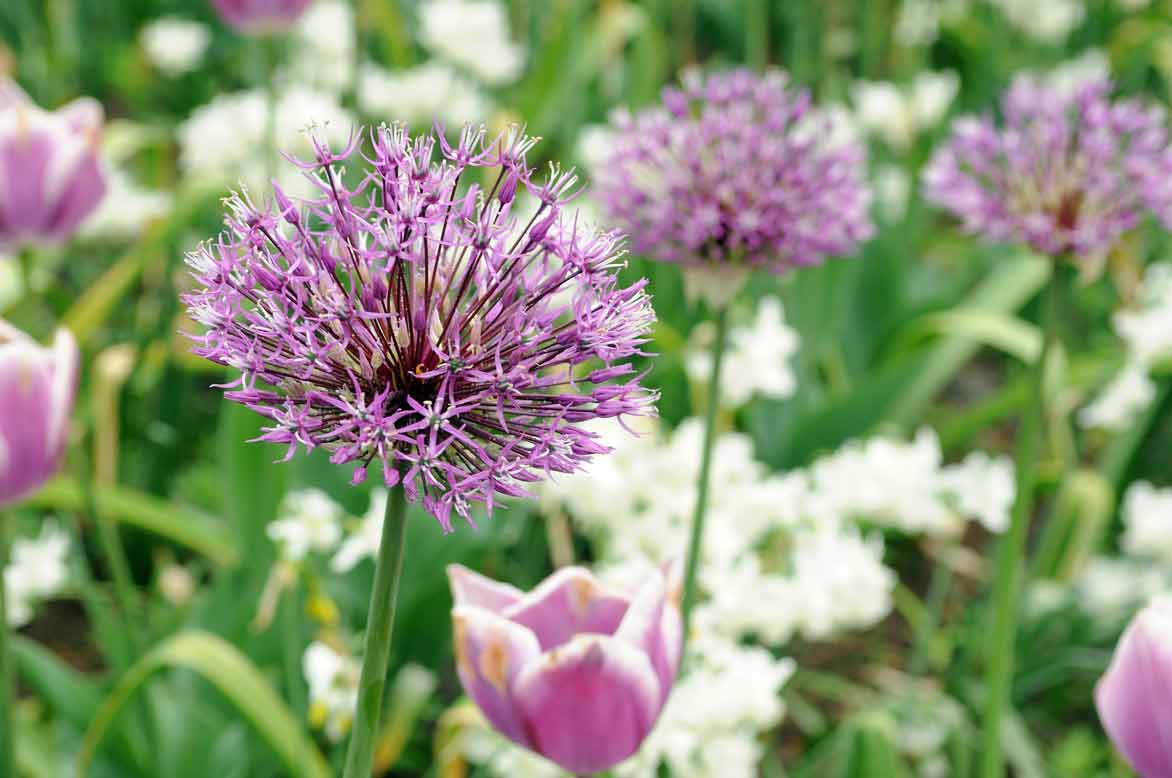 If alliums easily pair with perennials that they tower over with their graceful stems, they are also wonderful in the company of tulips.
If alliums easily pair with perennials that they tower over with their graceful stems, they are also wonderful in the company of tulips.
Discover more ideas for pairing alliums in our advice sheet: “Allium: 9 successful pairing ideas”
Useful resources
To discover:
- the entirety of our collection on our site: you will find the most beautiful varieties of ornamental garlic
- Should you cut or not cut the flowers of Allium after flowering? Read our expert’s article on our blog
- Article: Allium, ornamental garlic: 10 essential varieties
- Article: Allium, ornamental garlic: which variety to choose?
- Article: Allium: 9 ideas for successful associations
- Article: Planting Alliums
- Article: How to dry Alliums?
- Tutorial: How to preserve wild garlic and use it?
- Our Depth Guide for spring bulbs
- Subscribe!
- Contents































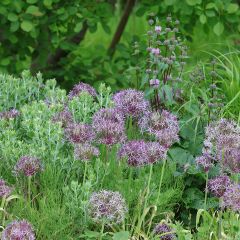


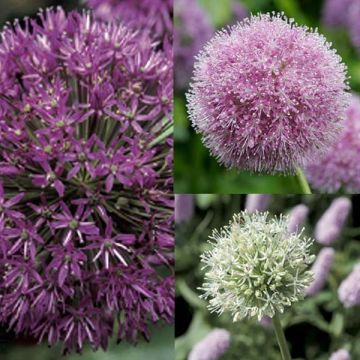
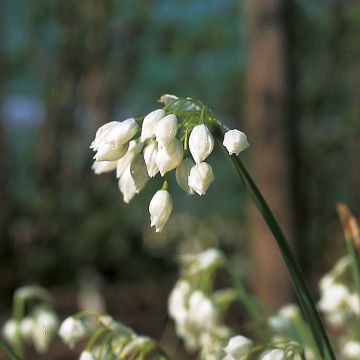


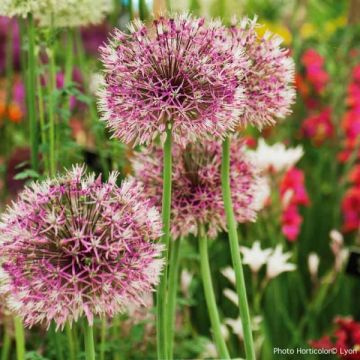
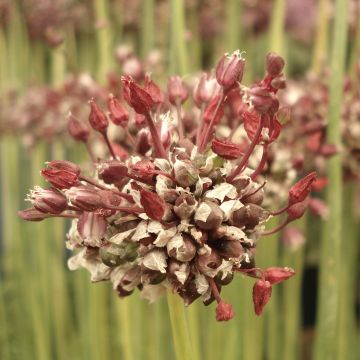
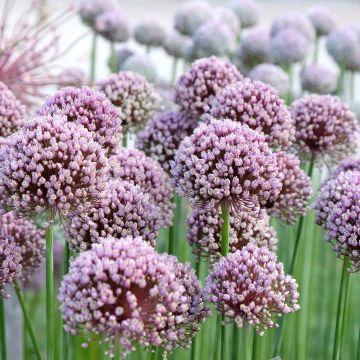
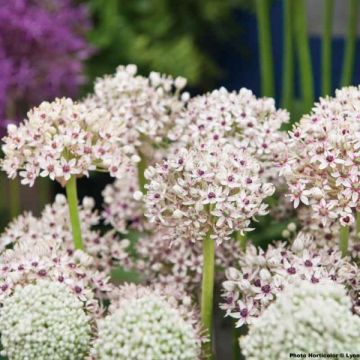
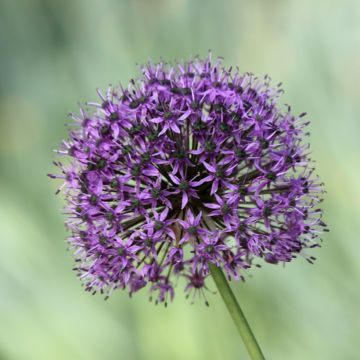
Comments